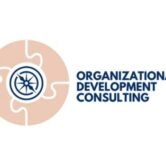How to Build a High-Performance Team from the Ground Up

Building a high-performing team requires more than just recruiting star players and hoping they’ll succeed. It’s a carefully planned and deliberate method that emphasizes trust, agreement, dialogue, and responsibility. If you’re creating a new team or changing an old one, the objective remains constant: to bring people together around common aims and help them constantly surpass targets.
In the modern business environment, outstanding teamwork isn’t just beneficial—it’s essential. This resource will show you how to build a high-performing team from the start, making sure you see continuous team performance improvement at every step.
Define a Clear Purpose and Vision
Every high-performing team begins with clarity—why does the team exist, and what is it working to accomplish?
Leaders must clearly articulate:
- The mission of the team
- Key short-term and long-term goals
- How the team’s work supports broader organizational objectives
If team members grasp how their daily tasks support the overall goals, they’re more motivated and involved. A clear purpose unites the team and serves as a guide during times of doubt or disagreement.
Hire with Intent and Complementary Strengths
Building a high-performance team starts with hiring people who are not only talented but bring complementary skills and values.
Look for:
- Diverse skill sets that cover technical, creative, and analytical areas
- Personality diversity, including thinkers, doers, and relationship builders
- Alignment with values, such as adaptability, accountability, and growth mindset
The goal isn’t to discover the “ideal” person. It’s about creating a team where each person’s skills contribute to the group’s overall achievements. Diverse teams are usually better than those with similar people. When managed effectively, they bring varied viewpoints and more creative solutions.
Establish Psychological Safety
Trust is the backbone of team success. If your team members don’t feel safe to speak up, challenge ideas, or admit mistakes, performance will always be limited.
Psychological safety can be fostered by:
- Encouraging honest feedback and active listening
- Rewarding vulnerability, not punishing it
- Modeling humility and accountability as a leader
If people believe they can participate freely, without being mocked or penalized, then inventiveness and teamwork flourish. These are critical elements for better team performance.
Set Clear Roles and Expectations
High-performance doesn’t happen in chaos. Each team member should have clarity around their responsibilities, deliverables, and boundaries.
Do this by:
- Creating detailed role descriptions
- Setting individual and team KPIs
- Aligning decision-making protocols
With clearly defined expectations, there’s reduced confusion, fewer redundancies, and greater space for concentrated, valuable work. Vagueness promotes problems; clear understanding encourages advancement.
Foster Open Communication
A well-functioning team communicates often, openly, and with consideration. Communication, from daily updates to strategic planning meetings, should be a collaborative effort.
Tactics to encourage open communication:
- Use collaboration tools like Slack, Trello, or Asana
- Hold regular one-on-one and team meetings
- Create feedback loops and post-mortems for projects
Good communication significantly boosts a team’s effectiveness. With clear exchanges, teams operate with increased speed, resolve issues more efficiently, and achieve stronger unity.
Develop Shared Accountability
Shared accountability means the team wins or loses together. It’s not about individual stars—it’s about how the team collectively delivers on its promises.
Encourage shared accountability by:
- Setting collective goals and tracking team-wide progress
- Celebrating group wins and addressing group setbacks
- Rotating leadership roles during projects
Accountability isn’t about blame—it’s about ownership. When teams adopt a mindset of “we’re in this together,” they raise the standard for everyone.
Invest in Ongoing Learning and Development
Great teams never stop learning. High-performance isn’t a destination—it’s a continuous journey of growth and improvement.
Support development by:
- Offering access to online courses, workshops, and certifications
- Encouraging peer-to-peer learning
- Hosting regular skill-sharing sessions
Promote curiosity and initiative. The more your team learns, the more innovative, agile, and productive it becomes.
Recognize and Reward Performance
Recognition reinforces the behaviours and outcomes you want to see. It also boosts morale, engagement, and team cohesion.
Build recognition into your culture:
- Publicly praise accomplishments in meetings or internal platforms
- Provide meaningful incentives—bonuses, promotions, time off
- Acknowledge both team and individual contributions
Recognition should be specific and tied to your team’s values. When people feel valued, they give their best work consistently—fueling ongoing team performance improvement.
Evaluate and Refine Team Processes
Regular evaluation is key to maintaining momentum and staying aligned with goals. No team stays high-performing without intentional reflection.
Use these methods to review performance:
- Conduct quarterly reviews and retrospectives
- Use performance analytics to identify bottlenecks or strengths
- Solicit feedback anonymously to surface hidden issues
Make adjustments when needed—refine processes, revisit goals, and realign roles. High-performing teams evolve. Stagnant teams falter.
Lead with Vision and Empathy
Finally, great teams need great leadership. But this doesn’t mean micromanaging—it means inspiring, guiding, and supporting.
Effective team leaders:
- Set the tone for communication and culture
- Provide regular coaching and constructive feedback
- Adapt leadership styles to fit individual team members’ needs
Leadership that combines vision with empathy creates an environment where people want to excel. Your influence as a leader can be the most powerful factor in building and sustaining high performance.
Final Thoughts
Creating a top-performing team from the start is both creative and methodical. It involves careful hiring, deliberate culture development, and a focus on constant advancement.
When done well, the result is a team that not only achieves objectives but surpasses them. A team that works together seamlessly, adjusts to shifts, and encourages new ideas. Crucially, it’s a team dedicated to sustained success via ongoing improvement in team performance.










